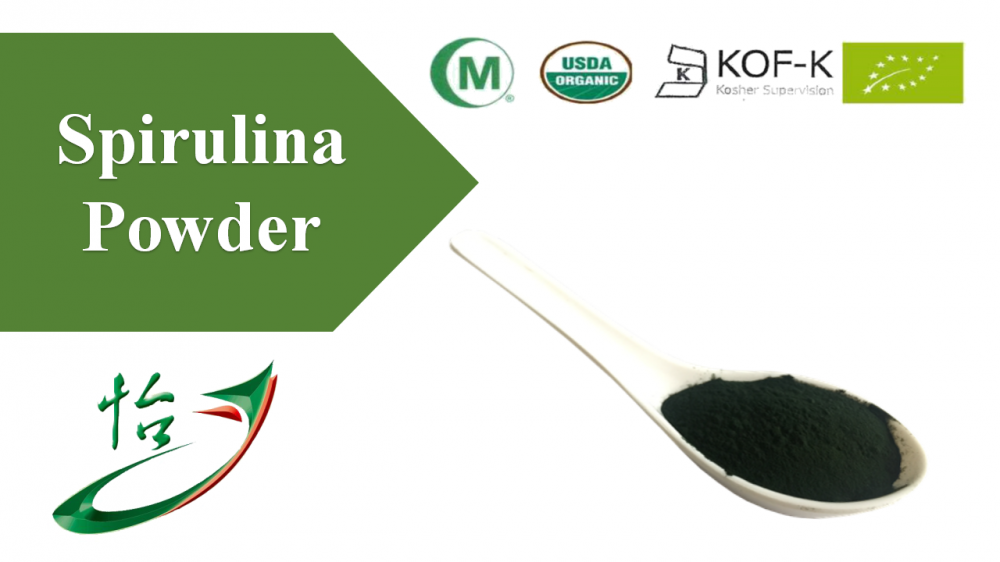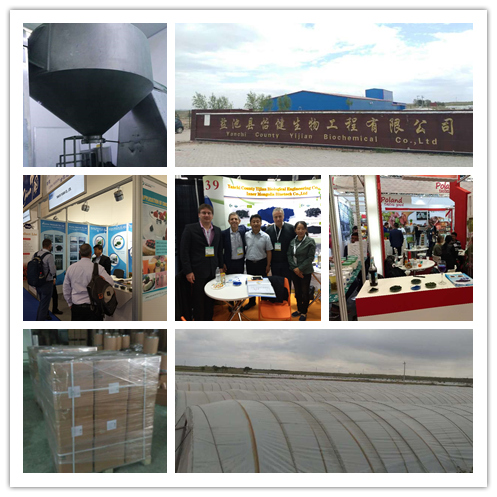In greenhouses and greenhouses, cucumber leaves often appear yellow-brown lesions, which seriously affect the yield. Although the use of a variety of pesticides alternately controlled, but the effect is not satisfactory. The reason for this is that the diseases that occur in cucumbers often occur in a variety of integrated ways, and prevention and treatment with one type of medicine will not work. I. Integrated leaf disease and symptoms in the shed: Downy mildew: At the adult stage, it starts from the lower leaves and gradually spreads upward. At the beginning of the disease, small spots of water-stained greenish-yellow or yellow spots appeared on the front of the leaves, and then gradually expanded from yellow to light brown. The leaves were limited by the formation of polygonal lesions, and a purple-yellow mold layer was formed at the lesion on the back of the leaves. Under wet conditions, the mold layer becomes thick and black. In severe cases, the lesions are connected in patches, the whole leaf is brownish-brown, withered and curled, and the dead leaves die. Anthracnose: The leaves were damaged, and small spots of water immersion appeared at the beginning. Afterwards, they expanded into nearly round lesions, reddish-brown, and surrounded by a circle of yellow lines. Under dry conditions, the central lesions ruptured to form perforations and the leaves died of dryness. In the later period, there was a small black spot on the lesion and a red mucus appeared when it was wet. Bacterial keratopathies: Leaves of adult plants are affected by water-stained light green spots. After the expansion, they become pale brown. Due to the limitation of the veins, they are polygonal lesions. The later lesions are gray and easy to perforate. When the humidity is high, milky white mucus, that is, pyoderma, develops on the lesion. Round leaf blight: Leaf lesions are initially dark green and immersed in water. The round diameter is 10 to 30 mm, and then it turns brown. When the humidity is high, the dark brown layer of the mold develops on the surface. Bacterial leaf blight: Leaf lesions are initially faded green, immersed in water, round, and then expanded to a nearly round or polygonal shape with a diameter of 1 to 2 mm. There are chlorotic halos around and it is not easy to see the bacteria on the back of diseased leaves, which is different from bacterial angular spot disease. Bacterial edge blight: leaf disease, early in the water hole near the water immersed small spots, then expanded to light brown irregular spots, halo around. In severe cases, large water-infested lesions develop from the margin of the leaf to the middle, showing a defensive appearance. Leaf spot: Leaf spot brown to grayish brown, round or oval to irregular shape, diameter 0.5 ~ 12 mm, the edge of the lesion is obvious or not obvious, when the humidity is high, the diseased part produces gray mold layer. Brown spot: Leaf lesions were light brown at the beginning, brownish green afterwards, slightly rounded, with a diameter of 6 to 12 mm. Most of the lesions were limited by the veins, showing an irregular or polygonal shape. Some lesions are pale to gray-brown with grayish black mold. Bacterial round spot disease: The yellow leaf area appears on the front of the leaf, and the water spot on the back is spotted. Lesions expanded to round or nearly circular, thin, yellow to brownish yellow, translucent in the middle, surrounded by yellow halos, bacteria concentration is not obvious. The environmental conditions required for the above-mentioned diseases are basically the same: higher air humidity, suitable temperature for cucumber growth period. Therefore, in the winter greenhouses and greenhouses, it is easy to mix and integrate in the case of less ventilation. Since most of the symptoms are the same, it is not easy to distinguish them. Therefore, most of them do fungal disease prevention and control, which in turn causes bacterial diseases, which in turn promotes the occurrence of fungal diseases. Second, comprehensive prevention and control methods Varieties choose strong disease resistance varieties. 2. Seeds are kept in disease-free, disease-free or disease-free plants to prevent seed carryover. Seeds should be disinfected prior to germination to eliminate germs. Commonly used methods are: soaking in warm soup: soaking in a warm soup at 55°C for 15 minutes, and then transplanting into cold water to sow germination. Use 100% solution of formalin to soak seeds for 30 minutes, then wash and germinate; or soak for half an hour with 100 times glacial acetic acid, rinse with water and then germinate; or soak for 1 hour with neomycin-containing 20010-6 concentration Wash out after washing and germination; or use 50% Daisen ammonium 500 times solution soaking for 1 hour, then remove and wash germination. 3. Rotation and non-guad crops are carried out for more than 3 years. 4. Soil treatment utilizes disease-free field soil seedlings or pesticides to disinfect bed soil. Usually 50% carbendazim or 50% anthraquinone, US 8 grams per square meter, mixed with the surface soil. It can also be used in the summer boring method, so that the soil temperature rises above 45 ~ 50 °C to eradicate germs. When conditions permit, the use of soilless seedlings has the best effect. 5, cultivation and management of cultivation in the use of half-high ridge cultivation, laying film, reduce the number of watering, reduce the humidity in the field. Apply basic fertilizers, increase phosphorus and potash fertilizers, protect the ground, close the shed in the morning, raise the temperature to 30-34°C, increase ventilation in the afternoon, reduce the humidity in the shed to 75% or less, create an environment that is not conducive to disease occurrence, and promptly clean In the pastoral field, the diseased plant debris is removed, buried or burned. Spraying a one-ten thousandth liquid of Shuofeng 481 once every 20 days can promote the photosynthesis of the leaves, increase the concentration of the cell fluid, increase the resistance to disease, and reduce the harm of disease. The above measures can reduce the occurrence of diseases. 6. In the early stage of the disease prevention and treatment, 68.75% DuPont Easy Water Dispersible Granules can be used 800 to 1000 times; or 72% Kelu 600 times; or 755 can kill 600 times the dry suspension agent; or 75% chlorothalonil WP 600 times; or 50% thiophanate wettable powder 500 to 700 times; or 50% carbendazim WP 500 to 700 times; or 65% zeara zinc WP 500 times; or 50% Daisen ammonium 1000 times; or 50% anthraquinone Fumei 400 times; or agricultural resistance 120 200 times, one of the above drugs, once every 6 to 7 days, 4 to 5 times in a row. The above agents are agents for controlling fungal diseases. The following agents are used for the prevention and treatment of bacterial diseases: Streptomycin for agricultural use 20010-6, or neomycin-containing 150-20010-6 fluid, or DT bactericide 500 times, or antibiotic 401 for 500 times; Use 70% DTM 600 times liquid; or 70% methyl azide copper 250 times, the above-mentioned agent once every 5 to 6 days, even spray 3 to 4 times. In winter greenhouses and greenhouses, when diseases occur in a comprehensive manner, one or two kinds of agents for controlling fungal diseases should be selected, and one or two kinds of agents for preventing and treating bacterial diseases should be alternately sprayed, so that a variety of diseases can be cured.
This classification summarizes the Feed Grade Spirulina Powder produced by our own factory in northwestern of China .
We have advanced equipment and strict quality control system to ensure the quality and production.

The products under the classification are:
1. Feed Grade Spiruina Powder .
Various parameter specifications of our product:
Naturland Certified ; CERES certified .
EU & NOP standard ; Kosher & Halal Available .
Low heavy metals & Micro Contents , Low & Stable PAH4 Level ,
PAH4 value is less than 10 ppb .Low microorganismsNon-Irradiation ,
Non GMO , Gluten Free , Allergen Free , Pesticides Free .
Own Factory : Manufacture in northwest of China . Legitimacy , Regularity , Cultural .
Own Lab : Quality control and Product development . Strictly , Creativity , Responsibility .

About Company
Yanchi County Yijian Biotechnol Co.,Ltd
was founded in Dec 2012 ,
by Mr. Dezhi Zhang ,
the legal representative of the company .
Company registered capital is 10 million RMB .
The main business sectors are culture , processing , internal sales , import and export trade of Organic Spirulina and Organic Chlorella products .
Yijian is known globally as one of the major suppliers of microalgae products across the world .
Annual production rate is 600 Mt .
Average annual sales income is around 5 million dollar .
Feed Grade Spirulina Powder
Feed Grade Spirulina Powder,Spirulina Powder For Feed,Feed Grade Nutritional Supplement,Feed Grade Organic Spirulina Powder
YANCHI YI JIAN BIOLOGICAL PROJECT CO.,LTD , http://www.spirulina-yj.com


